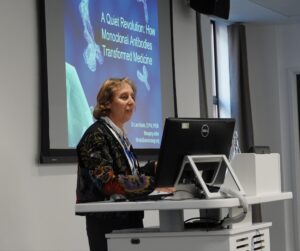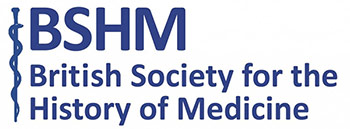This year marks 50 years since the technique for producing monoclonal antibodies was first published. In the years that have passed, monoclonal antibodies have radically reshaped medicine and spawned a whole new industry, said Lara Marks.
The long path began with early understanding of immunity, first with inoculation against smallpox, and then progression into the late 19th century with the work of scientists such as Paul Erlich. Antibodies have long been used for diagnosis, such as serological blood tests and immunoassays.
Therapy using antibodies began in the 1890s with antibodies initially sourced from serum collected from animals, usually horses. This serum therapy provided an effective means to treat a variety of infectious diseases, such as diphtheria. But the production of the serum was expensive and time-consuming because it contained many different antibodies and varied from batch to batch. For decades, researchers searched for a laboratory means to produce antibodies that were specific in their target. Between 1966 and 1975, various researchers did so successfully, but their techniques were hard to replicate, and they only produced limited quantities of antibodies. The breakthrough came in 1975 when two researchers at Cambridge, César Milstein and George Köhler, devised a method for generating large amounts of monoclonal antibodies of a predefined specificity, for which they won the Nobel Prize in 1984.
Even though it was then possible to produce an unlimited quantity of antibodies, few people understood the importance of the new technology at first. This began to change following the demonstration in 1977 that monoclonal antibodies could be used as probes to identify and distinguish different markets on the surface of cells.
Realisation
Once scientists realised the significance of monoclonal antibodies, Milstein began to receive a flood of requests for the cells. In order to cope with this, he turned to David Murray, the founder of Sera Labs, a small start-up company, to help with the distribution of monoclonal antibodies. By 1980 Sera Lab had become a major supplier of monoclonal antibodies, opening the way for scientists to investigate their potential clinical applications.
Monoclonal antibodies first made their mark in diagnostics, where they helped to improve the accuracy and speed of immunoassay tests, such as those used for infectious diseases like hepatitis B. The first drug approval came in 1986 with a monoclonal antibody drug to prevent kidney transplant rejection. Even so, progress was not smooth because many monoclonal antibodies prompted unwanted immune responses. This changed once scientists found a way to genetically engineer more human-like monoclonal antibodies.
Today monoclonal antibody drugs are used to treat more than 50 major diseases. They have had their most significant impact in cancer, helping to shift the disease from a terminal to a chronic condition. Monoclonal antibody drugs have also transformed the treatment of auto-immune disorders, like rheumatoid arthritis, making it possible to target the cause of the disease. The world’s best selling drug by a large margin is adalimumab, a monoclonal treatment for moderate to severe rheumatoid arthritis.
Monoclonal antibody drugs are highly expensive. Many are still under patent. They are also complicated to produce, and large doses are needed for treatment. The cost poses ethical dilemmas for healthcare resources. Addressing this issue is key to their widespread adoption for infectious diseases where they could provide an important tool for combatting antibiotics resistance.
Lara Marks is Visiting Researcher, Department of Medicine, University of Cambridge and Honorary Research Fellow, Science and Technology Studies, University College London. She is also the managing editor of WhatIsBiotechnology.org.
